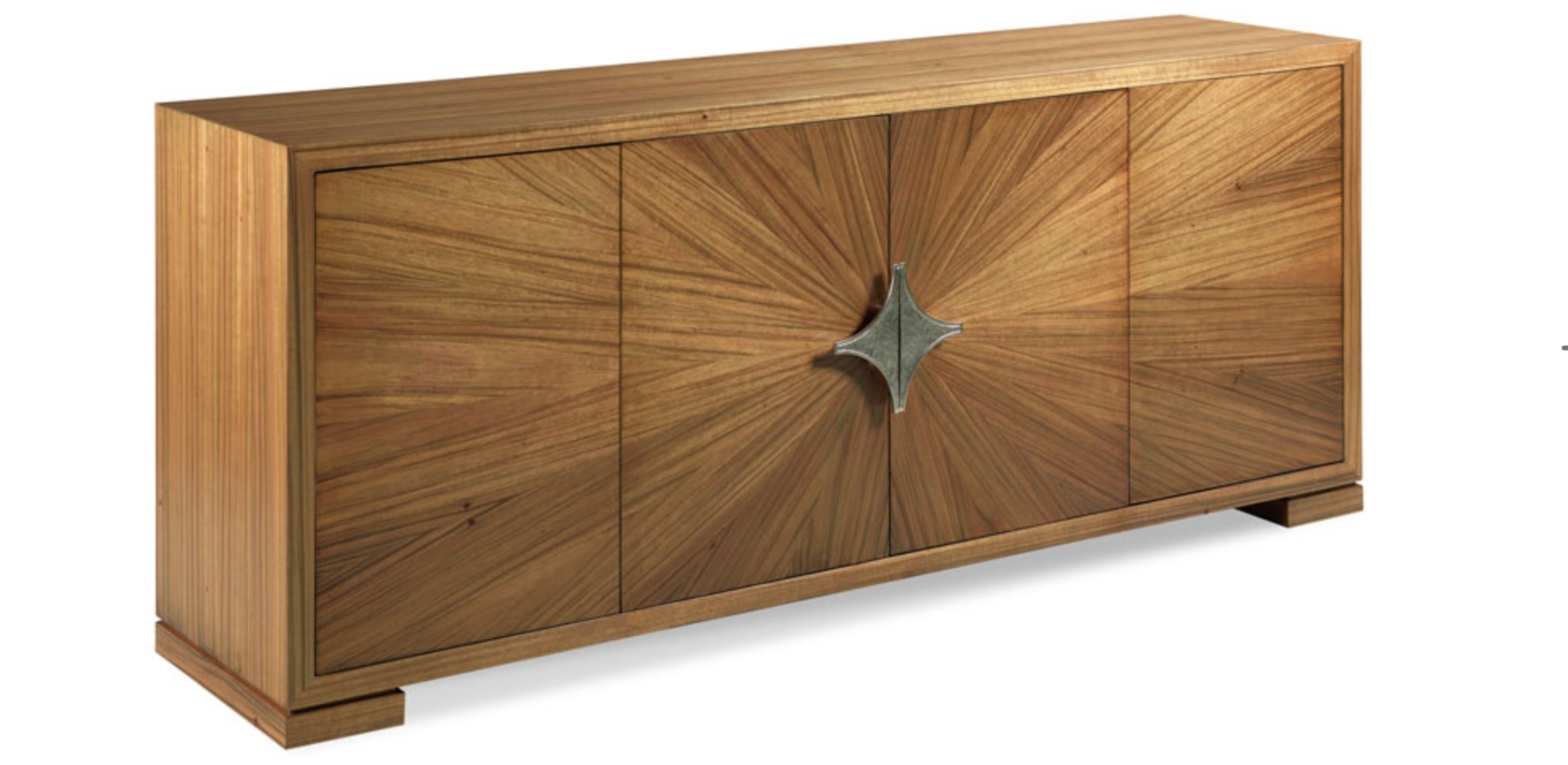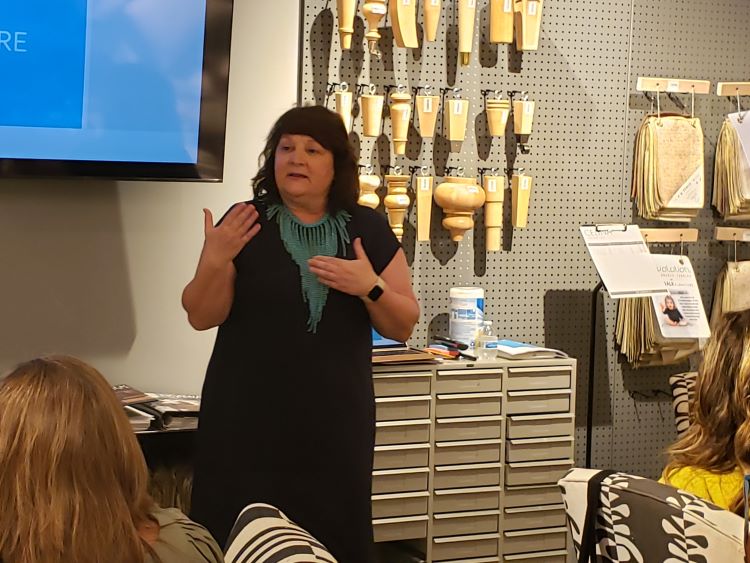Woodbridge Furniture has been making some changes to its design and manufacturing process, putting introductions into production more quickly to shorten the time between their debut and when they are ready to ship to buyers.
But the high-end producer hasn’t altered the attention it pays to designing pieces and getting the proportions, finishes, hardware and other details just right, said Watts Humphrey, president of the Thomasville, North Carolina-based company.
Humphrey and Cass Key, the company’s creative director, gave interior designers attending High Point x Design’s Design Day Aug. 3 a behind-the-scenes look at how its products move from conception to market. Designers also got a glimpse of some new products Woodbridge plans to roll out during the High Point Market Oct. 22-26.
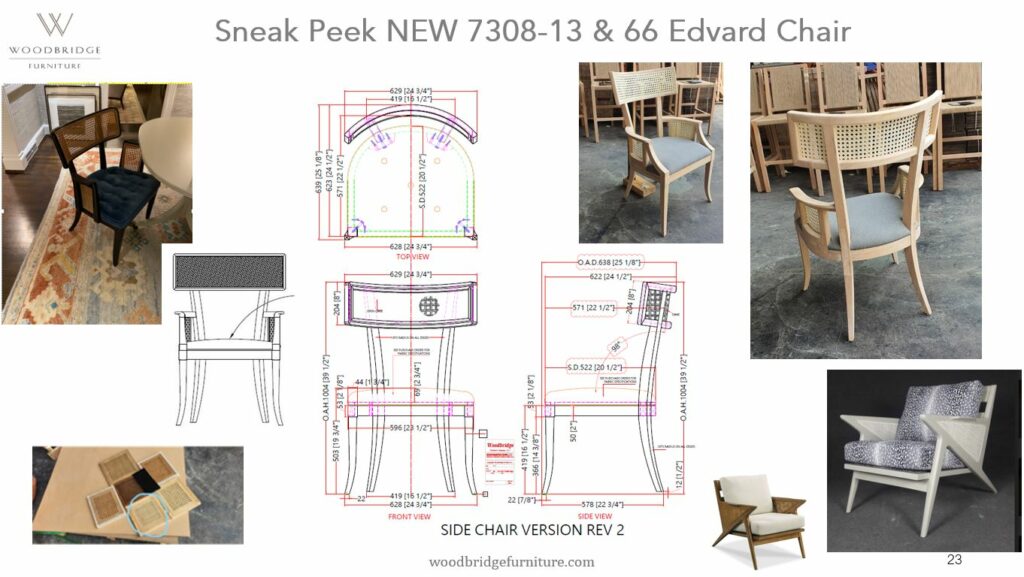
New for October — and April
A striking new firewood case is part of “a huge outdoor collection launching, hopefully, in October,” Key said. Made of powder-coated aluminum with an oil-rubbed bronze finish and a splayed base that adds stability and style, it can be oriented horizontally or vertically. The vertical orientation meets a growing need. “In homebuilding, built-ins displaced (the need for) a lot of tall furniture pieces,” Humphrey said. “But we’re seeing a shift back to fewer built-ins and people wanting furniture that they can take with them if they move.”
Also new will be a Regency-style Edvard chair with a curved cane back and tapering saber front legs. The side and arm versions of the chair will be available in two finishes: a deep brown Mink and a white Dove, Key said. In addition, the company is introducing a smaller version of its popular Borum puzzle table with storage drawers and a 100% wool fabric on the angled tabletop.
Woodbridge has enjoyed success with its licensed collections with interior designers Tobi Fairley and Lauren Liess and will be introducing new pieces in both those lines in October.
During the Design Day event, the company teased a third licensing deal with a well-known designer and author slated to debut in the spring of 2023. Key and Humphrey want to keep the name under wraps a bit longer, but designers attending the event learned who it is and got a peek at some initial designs.
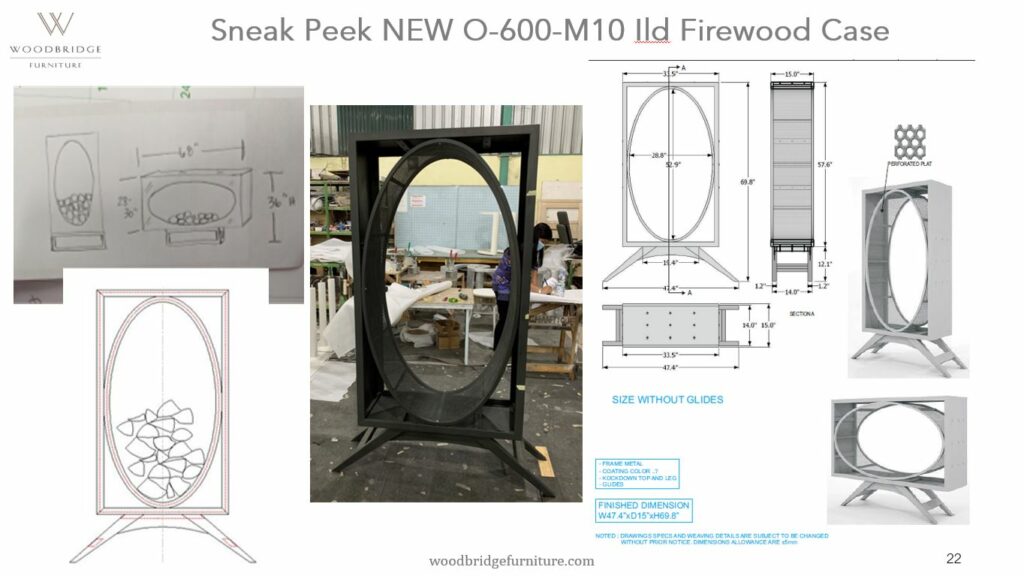
‘There’s nothing that replaces touching’
Woodbridge has been compressing and shifting its manufacturing timeline. The company still plans its biggest introductions around markets but instead of waiting to begin production until after the shows, when orders are written, “we’re introducing it and we’re producing it at the same time or soon thereafter,” Humphrey said. “So, you’ll see it in stock, not six months later, but as you see it at market, or maybe one to three months after you see it.”
Still, every product has to go through the same stages of development, from concept to design to production to market. It sounds straightforward, but often isn’t, Key said.
At Woodbridge, the concept part starts with following home furnishings and lifestyle trends, determining what products are missing from Woodbridge’s line, collaborating with its licensed designers and talking to customers. The design stage includes both CAD and pen-and-paper drawings, then lots of refining, “getting that dimension right, the pitch right, choosing the finish and fabric combinations,” Key said. After that, it’s time to assign a target price and build prototypes to ensure they hit that target price. Finally, more refining as the factory produces samples for market.
“Covid made it challenging to do the whole process,” Key said. “There were a lot of 11 p.m. Zoom calls and having our factory manager sit in chairs so we could get a sense of the pitch.”
The company manufactures primarily in Vietnam and Indonesia, and after two years of those video calls, Woodbridge executives are returning to regular travel to the overseas factories. “There’s nothing that replaces touching, feeling, sitting in this industry, right?” Humphrey said.
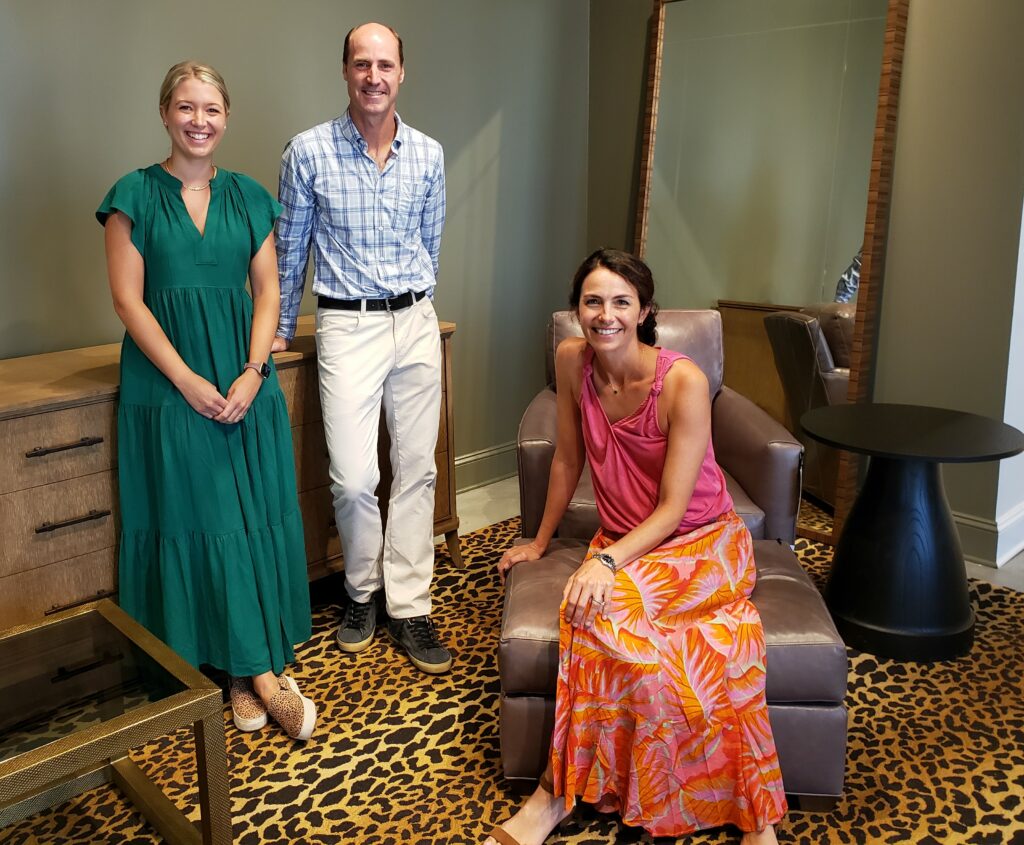
Refining designs
During the Design Day talk, Key and Humphrey explained the company’s commitment to detail and walked interior designers through how several pieces in the line were tweaked to get those details just right.
One example of Woodbridge’s commitment: tucking hardware molds for the stunning Manobo media cabinet into carry-on luggage to prevent the molds from melting in transit. “We really wanted the hardware to be special and shine like a piece of jewelry,” Key said.
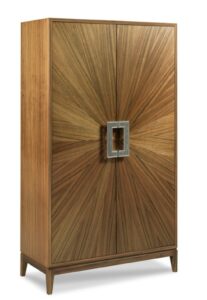
More proof: Known for its multistep finishes, the Woodbridge team routinely travels to factories with master finish boards to ensure consistency throughout the line and over time. “You might not notice the difference if you’re looking at a picture of a piece of furniture, but if you can touch it, you can really tell the difference, the depth of our finishes. It takes a lot of skill and careful steps to achieve,” Key said. (A back wall of Woodbridge’s High Point showroom at 220 Steele St. displays the company’s finishes as a large-scale art piece.)
“We finish most of our pieces throughout,” Humphrey said. “Even the back will have a consistent finish in keeping with the tone and color.” As they developed the Solomon bar cabinet — a stylistic companion to the Manobo media cabinet — they inset the glass shelves so people wouldn’t bump their heads while making drinks, and added puck lighting and deep drawers. A flippable shelf has wooden bridges to keep wine bottles from rolling and a flat side if people want to store other items there instead.
Key and Humphrey used the company’s curvaceous Amarna bench as another an example of how it refines its designs. Woodbridge wanted to offer the bench with an optional cushion — one that would stay put on the highly polished finish without sliding off or degrading the look of the piece. It took several renditions, but the team settled on two straps with brass bolt details that wrap around the cushion, adding both extra style and practical safety.
“That’s the level of detail we look for,” Humphrey said. “We design a product that’s both beautiful and functional — that’s connected to how people live.”

